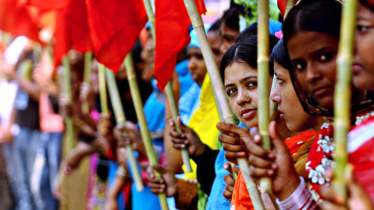
Photo : Messenger
The Rohingya, a Muslim minority from Myanmar’s Arakan province, have faced unimaginable hardships. Due to internal strife, they have been migrating to Bangladesh since the 1970s, with a significant influx following the political and religious unrest in 2017, which saw approximately 650,000 new arrivals. While Bangladesh has generously provided refuge to these displaced individuals, it now faces a new challenge: the spread of dengue fever within the Rohingya refugee camps, particularly in Cox’s Bazar.
Dengue fever, caused by the flavivirus DENV and spread by Aedes aegypti and Aedes albopictus mosquitoes, is a global health concern. The disease, characterised by high fever, severe headache, pain behind the eyes, joint and muscle pain, and rash, has reached epidemic proportions in various parts of the world, especially in Southeast Asia. In 2022, dengue infections skyrocketed, with 3,766,153 cases reported globally by December, resulting in 3,582 fatalities. This escalating situation, compounded by the Rohingya crisis, threatens to overwhelm Bangladesh’s healthcare system and development policies.
Cox’s Bazar, housing the largest concentration of Rohingya refugees, has been identified as Bangladesh’s second dengue ‘hotspot’ after Dhaka. The dense population, poor sanitation, and lack of adequate medical facilities in these camps create an ideal breeding ground for dengue mosquitoes. As the monsoon season approaches, the risk of a dengue outbreak intensifies, necessitating immediate and coordinated action from the government, NGOs, and the Rohingya community itself.
The main issue lies in the living conditions of the Rohingya camps. Located on downward-sloping hillsides, these camps rely on collecting and storing water for extended periods, providing stagnant water environments conducive to mosquito breeding. Moreover, the linguistic and cultural barriers further complicate efforts to disseminate information about dengue prevention and control. The camps’ overcrowded nature exacerbates the problem, with inadequate sanitation facilities and poor waste management contributing to the spread of the disease.
In 2019, over 100,000 individuals in Bangladesh were hospitalised due to dengue fever, with approximately 179 fatalities. By July 2022, the numbers had risen alarmingly, with 1,277 hospitalisations and seven deaths. This trend continued into 2023, with 1,066 dengue cases already reported among the Rohingya population in Cox’s Bazar. These statistics highlight the urgent need for a comprehensive approach to tackle the dengue crisis within the refugee camps.
The Role of Government and NGOs
The Bangladesh government, along with non-governmental organisations (NGOs), must spearhead efforts to control the dengue outbreak. Regular fogging operations in identified hotspots are crucial to reduce mosquito populations. Additionally, educational workshops to raise awareness about dengue prevention and control should be organised, targeting both the Rohingya community and the broader population in Cox’s Bazar.
Ensuring adequate medical facilities within the camps is essential. Establishing additional centers specifically for dengue patients will help manage the increasing number of cases. Moreover, the availability of dengue tests must be guaranteed to facilitate early detection and treatment. The government and NGOs should also focus on improving water management practices to eliminate sources of stagnant water. Proper disposal of containers that collect rainwater, regular cleaning of drains, and the use of larvicides in water storage areas can significantly reduce mosquito breeding sites.
Community Involvement
The Rohingya community itself must be actively involved in dengue prevention efforts. Community leaders and volunteers can play a vital role in spreading awareness and encouraging good hygiene practices. Simple measures such as wearing long sleeves and pants, using mosquito repellents, and installing mosquito nets can help protect individuals from mosquito bites. Additionally, promoting the use of insecticide sprays and mosquito coils within homes can provide an extra layer of protection
Addressing Underlying Issues
Addressing the underlying issues contributing to the dengue outbreak is crucial for long-term success. Poor sanitation and waste management practices in the camps must be improved. Installing more toilets and ensuring regular waste collection and disposal will help reduce the mosquito population. Moreover, efforts to develop waste-to-energy mechanisms can provide a sustainable solution to waste management problems while reducing environmental pollution.
Climate change is another factor exacerbating the dengue crisis. The increasing frequency and intensity of rainfall, coupled with rising temperatures, create ideal conditions for mosquito breeding. Addressing climate change requires a coordinated global effort, but local measures such as improved drainage systems and reforestation projects can mitigate its impact on dengue transmission.
The Need for Funding and Research
Dengue fever primarily affects poor and marginalised communities, who often lack access to adequate healthcare and preventive measures. Consequently, research and development in the field of dengue prevention and treatment have been historically underfunded. This neglect must be addressed urgently. Governments and international organisations should allocate more resources to develop effective vaccines and antiviral drugs. Additionally, investment in vector control technologies, such as genetically modified mosquitoes and innovative insecticides, can help reduce the spread of dengue.
Global Solidarity
The dengue crisis within the Rohingya refugee camps is not an isolated issue. It is part of a broader global health challenge that requires international cooperation and solidarity. The COVID-19 pandemic has shown the world the importance of a coordinated response to health emergencies. Similarly, tackling dengue fever necessitates a collaborative approach, with countries sharing knowledge, resources, and expertise to combat the disease effectively.
Conclusion
The increasing number of dengue cases in Rohingya refugee camps in Cox's Bazar is a cause for grave concern. Overcrowded and unsanitary conditions, coupled with the monsoon season, create a perfect storm for the spread of dengue fever. To prevent a full-blown epidemic, immediate and concerted action is required.
The government, NGOs, and the Rohingya community must work together to implement effective dengue control measures. Regular fogging, improved water management, and enhanced medical facilities are crucial steps in this fight. Additionally, raising awareness about dengue prevention and promoting good hygiene practices within the camps will help protect vulnerable populations.
Addressing the root causes of the dengue outbreak, such as poor sanitation and climate change, is essential for long-term success. Moreover, increased funding and research in dengue prevention and treatment are necessary to develop innovative solutions and ensure equitable access to healthcare.
As we navigate this public health crisis, global solidarity and cooperation are paramount. By working together, we can protect the Rohingya people and prevent the dengue outbreak from spiraling out of control. The time to act is now.
The writer is a Public Health Expert, Associate Professor, CDCH and Executive Member, Bangladesh Awami Jubo League.
Messenger/Fameema








